Sustainable Packaging – automotive 24-05-2023 - Arhive
Sustainable Packaging – automotive Chemical recycling platic waste
Crude Oil Prices Trend
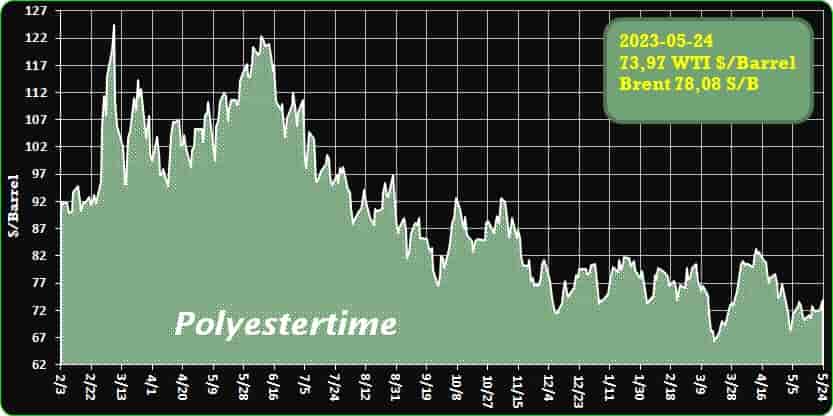
Crude Oil Prices Trend by Polyestertime
-Plastic and automotive
The amount of plastic used in a car can vary depending on the make, model, and specific components of the vehicle. However, it’s worth noting that cars contain various types of plastics in different areas, including both visible and hidden parts.
Plastics are commonly used in car interiors for components such as the dashboard, door panels, center console, seats, and trim. They are also used in exterior parts like bumpers, grilles, mirrors, and body panels. Additionally, there are plastic components in the engine compartment, including parts of the cooling system, intake manifold, and various connectors.
While it is challenging to provide an exact quantity of plastic used in a car, estimates suggest that modern cars can contain anywhere between 300 to 900 pounds (136 to 408 kilograms) of plastic. This includes both thermoplastics and thermosetting plastics used in different applications throughout the vehicle. Sustainable Packaging – automotive
It’s worth noting that there is a growing emphasis on reducing plastic use in the automotive industry due to environmental concerns.
Car manufacturers are increasingly exploring alternatives and incorporating more sustainable materials into their designs. Chemical recycling platic waste
Polyamide 6 and polyamide 66 for automotive
Polyamide 6 (PA6) and polyamide 66 (PA66) are two commonly used types of polyamides in the automotive industry. They are thermoplastic materials known for their excellent mechanical properties, heat resistance, and chemical resistance, which make them suitable for various automotive applications.
Polyamide 6 (PA6): PA6 is a versatile and widely used engineering plastic. It offers good strength, toughness, and impact resistance, making it suitable for various automotive components. Some common applications of PA6 in the automotive industry include:
- Engine Components: PA6 is used for manufacturing engine covers, intake manifolds, oil pans, and other under-the-hood components. Its resistance to high temperatures and chemicals makes it ideal for these applications.
- Fuel System Components: PA6 is used for fuel rails, fuel filter housings, and fuel tank components due to its excellent chemical resistance to fuels and solvents.
- Electrical Components: PA6 is used for connectors, sensors, cable sheathing, and other electrical components in automotive wiring systems. It provides good electrical insulation properties. Sustainable Packaging – automotive
- Interior Parts: PA6 is used for manufacturing various interior components such as door handles, seat frames, dashboard parts, and trim pieces. Its mechanical properties and resistance to wear and abrasion make it suitable for these applications. Chemical recycling platic waste
Polyamide 66 (PA66): PA66 is another popular polyamide used in the automotive industry. It offers improved mechanical properties compared to PA6, including higher tensile strength and stiffness. Some common applications of PA66 in automotive include:
- Under-the-Hood Components: PA66 is commonly used for manufacturing radiator end tanks, air intake manifolds, and other components that require high strength, rigidity, and resistance to high temperatures.
- Cooling System Components: PA66 is used for manufacturing coolant pipes, water pumps, and other parts in the automotive cooling system. Its resistance to heat and chemicals is essential in these applications.
- Exterior Components: PA66 is used for exterior parts like mirror housings, wheel covers, and grille components due to its combination of mechanical properties, weather resistance, and dimensional stability.
- Structural Components: PA66 is also used in the production of structural components, such as brackets, clips, and supports, where its high strength and stiffness are required. Sustainable Packaging – automotive
Both PA6 and PA66 offer advantages in terms of mechanical properties, heat resistance, and chemical resistance, but PA66 generally provides higher performance due to its superior strength and stiffness. The specific choice between PA6 and PA66 depends on the specific requirements of the automotive application, considering factors such as load-bearing capacity, operating conditions, and cost. Chemical recycling platic waste
PET and PBT resin in automotive
PET (Polyethylene Terephthalate) and PBT (Polybutylene Terephthalate) resins are commonly used in the automotive industry for various applications due to their excellent mechanical and thermal properties.
PET Resin: PET is a strong and lightweight thermoplastic polymer that offers high strength, good dimensional stability, and excellent resistance to impact and abrasion. It is widely used in the automotive industry for applications such as:
- Engine Components: PET resins can be found in engine components such as connectors, housings, and sensors due to their ability to withstand high temperatures and exposure to chemicals.
- Electrical Systems: PET is used for electrical connectors, switches, and wiring harnesses due to its excellent electrical insulation properties and resistance to heat. Chemical recycling platic waste
- Interior Components: PET resins are used in interior applications such as instrument panels, door panels, and trim components due to their aesthetic appeal, scratch resistance, and durability.
- Fluid Handling Systems: PET resins are used in fuel systems, coolant systems, and other fluid handling applications due to their excellent chemical resistance and low moisture absorption. Sustainable Packaging – automotive
PBT Resin: PBT is a thermoplastic polyester that offers high strength, good dimensional stability, and excellent resistance to heat, chemicals, and weathering. In the automotive industry, PBT resins are commonly used for the following applications:
- Electrical Systems: PBT is extensively used for electrical connectors, relays, switches, and sockets due to its excellent electrical properties, flame resistance, and dimensional stability.
- Exterior Components: PBT resins are used in exterior applications such as grille assemblies, mirror housings, and bumper components due to their impact resistance, UV stability, and ability to withstand harsh weather conditions.
- Lighting Systems: PBT is commonly used for lamp sockets, bulb holders, and lighting components in automotive lighting systems due to its high heat resistance and dimensional stability. Chemical recycling platic waste
- Under-the-Hood Components: PBT resins find applications in under-the-hood components such as cooling fans, engine covers, and intake manifolds due to their resistance to heat, chemicals, and dimensional stability.
Both PET and PBT resins are preferred in automotive applications due to their mechanical properties, chemical resistance, dimensional stability, and ease of processing. They contribute to lightweighting vehicles, improving fuel efficiency, and providing durable and reliable components. Sustainable Packaging – automotive
Bioplastic in automotive
Bioplastics are a type of plastic derived from renewable sources, such as plants, rather than fossil fuels. They have gained attention in various industries, including the automotive sector, as a potential alternative to traditional petroleum-based plastics. Here are some ways bioplastics are being used in the automotive industry:
- Interior Components: Bioplastics can be used to manufacture interior components such as dashboards, door panels, and trim pieces. These components can be made from biodegradable or bio-based materials, reducing the environmental impact compared to conventional plastics.
- Seat Cushions: Bioplastics can be used to produce foam materials for seat cushions, providing a more sustainable alternative to traditional petroleum-based foams. These bio-based foams can offer similar performance and comfort while reducing the reliance on fossil fuels. Chemical recycling platic waste
- Exterior Parts: Certain bioplastics, such as polylactic acid (PLA), can be utilized to create exterior parts like body panels, bumpers, and spoilers. PLA-based bioplastics are lightweight and have good impact resistance, making them suitable for automotive applications.
- Packaging and Components: Bioplastics can also be used in automotive packaging materials and smaller components. For example, they can be employed in packaging for spare parts or as protective covers for delicate components during transportation. Sustainable Packaging – automotive
- Electrical Components: Some bioplastics exhibit good electrical insulating properties, making them suitable for use in wiring harnesses and other electrical components. Bioplastics can replace conventional plastic insulators, reducing the environmental impact of the automotive electrical systems.
It’s worth noting that while bioplastics offer certain environmental advantages over conventional plastics, there are still challenges to overcome. For instance, ensuring the scalability of bioplastic production, addressing the cost considerations, and addressing the end-of-life management of bioplastics to ensure proper disposal or recycling. Nonetheless, the automotive industry is exploring and adopting bioplastics as part of its sustainability efforts and the drive towards more eco-friendly materials. Chemical recycling platic waste
Recycled plastic in automotive
Recycled plastic is increasingly being used in the automotive industry for various applications. Here are some common uses of recycled plastic in automotive:
- Interior components: Recycled plastic is utilized in the manufacturing of various interior components such as door panels, dashboard trim, seat cushions, and carpeting. These components can be made from recycled plastic materials, including polyethylene terephthalate (PET) and polypropylene (PP), which help reduce the overall weight of the vehicle and enhance fuel efficiency.
- Exterior parts: Recycled plastics can be found in exterior parts like bumpers, fenders, wheel arch liners, and underbody panels. These components often incorporate recycled high-density polyethylene (HDPE) or thermoplastic olefin (TPO) materials, which provide durability, impact resistance, and improved resistance to weathering. Sustainable Packaging – automotive
- Wiring harnesses: Wiring harnesses, which consist of numerous wires and connectors that transmit electrical signals throughout the vehicle, can incorporate recycled plastics. For instance, some wire insulation and cable sheathing can be made from recycled materials, such as recycled PVC (polyvinyl chloride) or polyethylene.
- Battery casings: In electric vehicles (EVs), the casings for battery packs can be manufactured using recycled plastic materials. These casings often require materials with high strength, heat resistance, and electrical insulation properties, making recycled plastics a viable option. Chemical recycling platic waste
- Filaments for 3D printing: The automotive industry also employs 3D printing for rapid prototyping and manufacturing of components. Recycled plastic filaments, such as polylactic acid (PLA) or acrylonitrile butadiene styrene (ABS) made from recycled sources, can be used in 3D printers to create custom parts, tooling, and fixtures.
The integration of recycled plastics in the automotive industry helps reduce waste, conserve resources, and lower the carbon footprint of vehicle production. However, it’s important to note that the specific applications and extent of recycled plastic usage may vary among manufacturers and regions, as sustainability initiatives and regulations continue to evolve. Sustainable Packaging – automotive
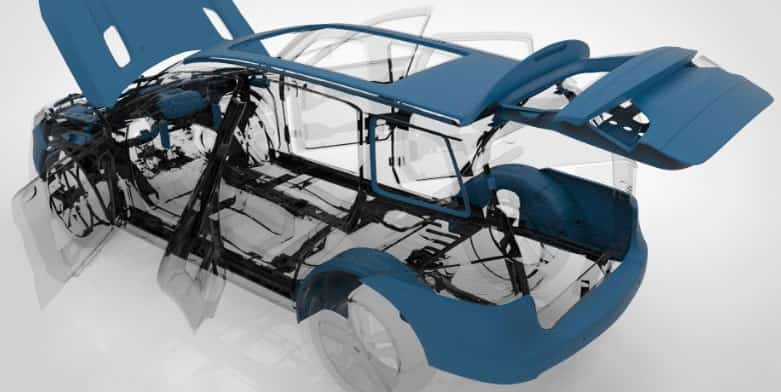
-Advancing Towards a Circular Economy: Unlocking the Potential of Chemical Recycling to Recycle 80 Percent of Plastics by 2030
Introduction:
Plastics recycling in Europe faces a significant challenge, as current research conducted by the Joint Research Center (JRC) of the European Commission, in collaboration with the Universities of Ghent and Maastricht, reveals that only a small fraction of plastics are currently being recycled. However, there is hope on the horizon as advancements in chemical recycling methods present an urgent solution to significantly increase the recycling rate. By harnessing these technologies and establishing a clear framework for measuring recycled content, Europe has the potential to achieve an impressive 80 percent recycling rate by 2030.
The Promise of Chemical Recycling: Researchers project that the percentage of plastics suitable for recycling can reach 80 percent by 2030, a substantial increase from the current rate of approximately 18 percent. Recognizing this opportunity, the chemical industry is actively engaged in developing technologies and projects to accelerate the chemical recycling of plastics. By embracing chemical recycling, Europe can reduce its environmental impact, diminish reliance on virgin plastics, and contribute to a more sustainable future. Sustainable Packaging – automotive
Overcoming Challenges:
While technology is not the primary obstacle to achieving higher recycling rates, scaling up recycling technologies and projects necessitates the establishment of a clear framework for calculating recycled plastic content in products. The chemical industry’s trade association, Cefic, emphasizes the importance of adopting the “mass balance method.” Already proven successful in industries like fair trade cocoa and coffee, this method offers a viable approach for quantifying the recycled content of plastic products.
Tracking the flow of recycled materials throughout the production process ensures accurate measurement and certification of the environmental benefits of chemical recycling.
Transparency and Consumer Awareness:
Implementing the mass balance method enables stakeholders to provide transparent information regarding the actual recycled content of plastic products. This transparency empowers consumers and businesses to make informed purchasing decisions and fosters the demand for recycled plastics. Chemical recycling platic waste
However, challenges remain in establishing effective collection and sorting systems, addressing the complexity of multi-layered plastics, and ensuring a consistent supply of feedstock for recycling processes.
Collaboration for Success: To realize the potential of chemical recycling, collaboration among the European Commission, national governments, and industry stakeholders is essential. Sustainable Packaging – automotive
A supportive regulatory framework and investments in recycling infrastructure are crucial for the successful implementation of chemical recycling. Public awareness campaigns and educational initiatives can also play a vital role in promoting responsible plastic consumption and cultivating a circular economy mindset among individuals and businesses.
Conclusion:
The path to a circular economy is paved with the promise of chemical recycling. By increasing the recycling rate to 80 percent by 2030, Europe can significantly reduce its environmental footprint, reduce dependency on virgin plastics, and pave the way for a more sustainable future. Chemical recycling platic waste
Through concerted efforts, stakeholders can overcome challenges, establish effective recycling systems, and unlock the immense potential of chemical recycling to revolutionize plastic waste management in Europe.
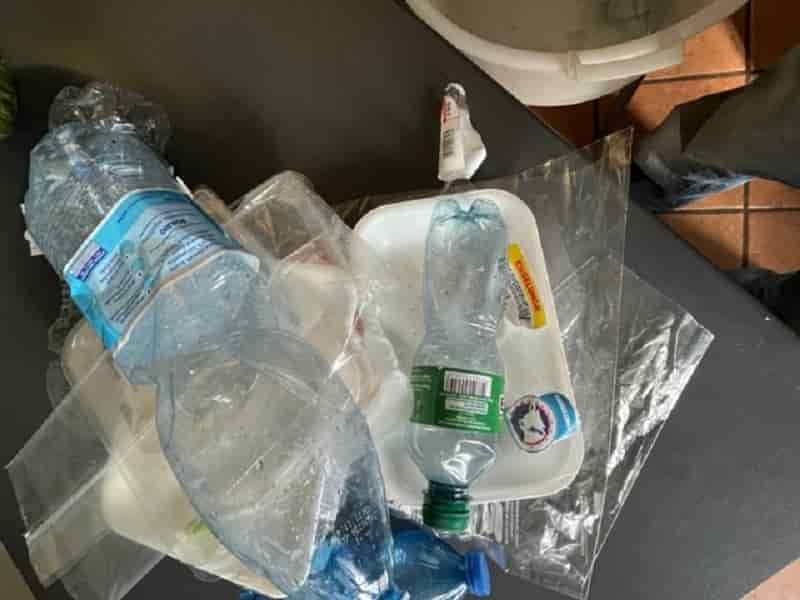
Credit : Polyestertime
-Exploring the Potential of Foamed Starch for Sustainable Packaging
A groundbreaking endeavor, led by multiple partners in Germany, is set to examine the viability of utilizing foamed starch as a means to create environmentally friendly packaging materials. The initiators of this ambitious project have expressed optimism regarding its initial progress. Their ultimate objective is to provide the packaging and construction industries with an alternative to the commonly used fossil-based foams found in flexible, foamed film applications, which are typically underutilized in recycling efforts, even when properly disposed of in recycling bins. Chemical recycling platic waste
Currently available foam films, such as foamed polystyrene (PS), polyethylene (LDPE), or polyurethane (PU), often end up being discarded after a single use and subsequently incinerated, resulting in a significant waste of valuable resources. Developing a foamed film using renewable resources like starch would enable these films to be composted at the end of their lifecycle. Sustainable Packaging – automotive
The five project partners involved—Fraunhofer UMSICHT, Loick Biowertstoff GmbH, the Institute for Plastics Processing at RWTH Aachen University (IKV), SHS plus GmbH, and Gefinex GmbH—highlight the potential of foamed starch film packaging in addressing the current disposal predicament within the packaging sector.
The project partners have recently announced the successful creation of initial compounds composed of starch, additives, and biopolymers. Furthermore, the project encompasses the development of economically and efficiently scalable processes for producing these novel films. The partners anticipate that by the end of 2025, they will have generated an industrially viable and marketable product derived from renewable raw materials, offering a sustainable alternative to conventional fossil-based plastics.
Overseen by the Fachagentur Nachwachsende Rohstoffe e. V. (FNR), the joint project, titled “Starch foam films,” is scheduled to span three years. It falls under the funding area of “Development of a potentially marketable, bio-based product” within the “Renewable Resources” funding program. Chemical recycling platic waste
Through this initiative, the project consortium aims to contribute significantly to the advancement of sustainable packaging solutions, paving the way for a greener and more eco-conscious future. Sustainable Packaging – automotive
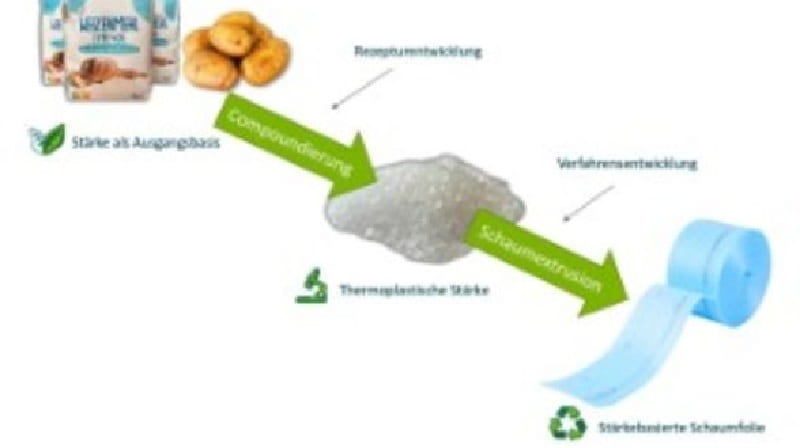
-The issue of recycling polypropylene (PP) poses several challenges due to the long polymer chains present in the material
When PP is derived from mechanical pre-sorting of various material streams, the resulting melt flow index is often too low for further processing through injection molding or extrusion. To address this problem, the use of peroxide can be beneficial as it shortens the long polymer chains, thereby increasing the melt flow index.
However, working with peroxide comes with its own set of considerations. Peroxide is a flammable, highly reactive, and sometimes explosive chemical, requiring strict adherence to safety regulations during transport and handling. Special protective equipment and dosing technology are necessary for safe handling, and peroxides have limited shelf life even under proper storage conditions. To overcome these challenges, Polyvel Europe, a compounder based in Jork, Germany, has developed the P-Series range of peroxide masterbatches specifically designed to enhance the flow properties of recycled polypropylene. Sustainable Packaging – automotive
Polyvel’s peroxide masterbatches are formulated with additive concentrations of 5%, 10%, and 20% peroxide. They are available in granulate form, which ensures safe handling and facilitates easy dosing. Moreover, these masterbatches have a shelf life of over five years since the peroxide is encapsulated within a polymeric carrier material, preventing volatilization until the time of processing. Chemical recycling platic waste
By incorporating peroxide masterbatches into the recycled polypropylene, the viscosity can be modified in a targeted manner, leading to an increase in the melt flow index. This modification enables the successful processing of recycled polypropylene through injection molding. Furthermore, the peroxide masterbatch can be directly dosed during the injection molding process to further improve the material’s flowability. This enhancement is particularly advantageous when producing thin-walled components with long flow paths, ensuring greater process reliability.
The increased flowability of the polypropylene also allows for lower processing temperatures, resulting in shorter cooling times. This reduction in overall cycle time improves productivity and ultimately lowers production costs. Moreover, the precise and cost-effective adjustment of polypropylene’s melt flow index through the use of masterbatches ensures consistent and reproducible results.
This capability enables the processing of recyclates as a higher-quality starting material, reducing the reliance on primary raw materials in the production of plastic components and products. Sustainable Packaging – automotive
Additionally, the masterbatch granules facilitate the homogeneous distribution of the additive within the polypropylene during compounding. This uniform distribution ensures that the peroxide’s effects are evenly dispersed, leading to reliable and predictable outcomes. Chemical recycling platic waste
With varying peroxide contents available, both small and large melt flow index adjustments can be precisely tailored to meet specific requirements.
While peroxide increases the melt flow index in polypropylene, it has the opposite effect on polyethylene (PE), causing the viscosity to rise. This characteristic offers advantages in recycled film extrusion and blow molding processes where increased viscosity can be beneficial.
In summary, the utilization of peroxide masterbatches in the recycling of polypropylene presents a solution to the challenges posed by long polymer chains. By enhancing the melt flow index, these masterbatches enable the successful processing of recycled polypropylene, resulting in improved productivity, cost savings, and the conservation of primary raw materials. The development of granulated masterbatches ensures safe handling, precise dosing, and uniform distribution, guaranteeing reliable and reproducible outcomes. Chemical recycling platic waste
Furthermore, the versatility of peroxides extends beyond polypropylene, as they can also be advantageous in polyethylene-based processes such as film extrusion and blow molding. Sustainable Packaging – automotive 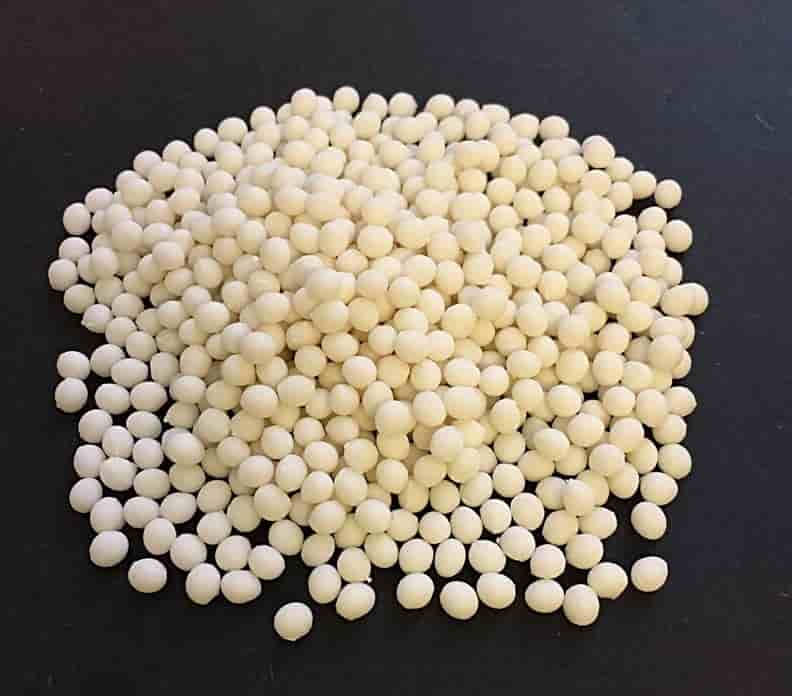
-Traditional Production crude oil Versus shale oil
The cost of traditional production crude oil and shale oil can vary based on several factors. Here are some key points to consider when comparing their costs:
- Extraction Process: Traditional production crude oil is typically extracted from conventional oil reservoirs through drilling wells. Shale oil, on the other hand, is extracted through hydraulic fracturing (fracking) of shale rock formations. Fracking requires advanced technology and additional infrastructure, which can contribute to higher costs compared to conventional drilling.
- Reservoir Characteristics: Traditional oil reservoirs are often easier to access and have higher permeability, allowing oil to flow more freely. Shale oil reservoirs, however, have lower permeability and require fracking to extract oil from the tight rock formations. The complexity of accessing and extracting oil from shale formations can add to the cost. Sustainable Packaging – automotive
- Production Scale: Traditional oil fields are often large and well-established, allowing for economies of scale in production. Shale oil operations, on the other hand, tend to be smaller and require more frequent drilling of wells to maintain production levels. This can increase costs as additional wells need to be drilled and maintained. Chemical recycling platic waste
- Environmental Considerations: Shale oil extraction, particularly hydraulic fracturing, requires significant amounts of water, chemicals, and energy. Implementing proper environmental safeguards and managing waste can add to the overall cost of shale oil production. Traditional oil production also has its own environmental challenges, such as the potential for spills or leaks during drilling and transportation.
- Market Conditions: The cost of both traditional and shale oil production is influenced by market conditions, including oil prices, supply and demand dynamics, geopolitical factors, and regulatory policies. Fluctuations in oil prices can impact the profitability and viability of both types of production.
It is important to note that the cost of crude oil production can vary widely depending on specific circumstances, such as the location of the operation, technological advancements, efficiency of operations, and access to infrastructure. Chemical recycling platic waste
Therefore, providing precise cost comparisons between traditional and shale oil production is challenging without considering specific case studies or data from a particular time period. Sustainable Packaging – automotive
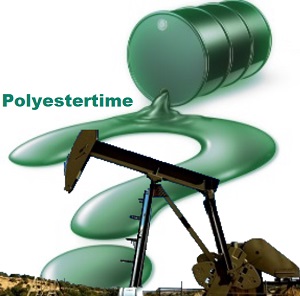
-Shinshu University develops degradation‐free polymer closed loop recycling method: Decomposes into original fine particles when soaked in a solvent
Among the various polymer materials used in daily life, only plastic bottles have achieved closed‐loop recycling and are reused without degradation. The production of polymers continues to increase, and predictions indicate that by 2050, the amount of waste derived from polymers will increase by over threefold compared with the current levels. A research group led by Associate Professor Daisuke Suzuki of the School of Science and Technology, Faculty of Textile Science and Technology at Shinshu University, has developed a material recycling method for polymer particles. By simply soaking the used polymer materials in a solvent, they can be broken down into their original fine particles and reused, resulting in low energy consumption and no degradation. Chemical recycling platic waste
Suzuki said, “We have demonstrated the concept with polymethyl methacrylate, but similar recycling is possible with any polymer composed of fine particles.
Statistics show that one‐fifth of the polymers produced in Japan are composed of microparticles. We are currently conducting joint research with the paint and tire industries, and this research was conducted in cooperation with SEKISUI CHEMICAL CO., LTD. Sustainable Packaging – automotive
We hope to use this method as a design guideline when creating new materials for the next generation.” The result has been published in the journal Green Chemistry.
Polymer microparticles ranging in size from tens to hundreds of nanometers are used in cosmetics, paints, paper processing and other applications. By simply drying a dispersion containing these tiny microparticles, the microparticles can fuse together to form a particulate film. For this reason, they are used in adhesives and paints; however, this has poor strength. Chemical recycling platic waste
Therefore, various chemical reactions can be induced at the fine particle interface using plasticizers, etc., to firmly bind the microparticles and strengthen them. However, once they are formed, the chemical bonds are difficult to break once again, often requiring special chemical reagents and harsh conditions such as high pressure and temperature. In addition, once the interfaces are forcibly broken in this way, recovering the material in a reusable state is challenging. Even if the material could be recovered, its quality would be degraded; therefore, the reuse of fine‐particle films while maintaining their high quality is considered difficult. Sustainable Packaging – automotive
The newly developed method enables recycling by maintaining decomposition at the particulate level instead of the monomer level, as in the conventional method. Specifically, by simply placing the polymer film, or other material to be recycled, in a solvent containing a mixture of ethanol and water in a certain ratio, it can be degraded to the particulate level within 24 hours. The fine particles can be recycled by removing them from the mixture. The yield exceeds 99%, and the film produced after recycling performs at par with that before recycling. Chemical recycling platic waste
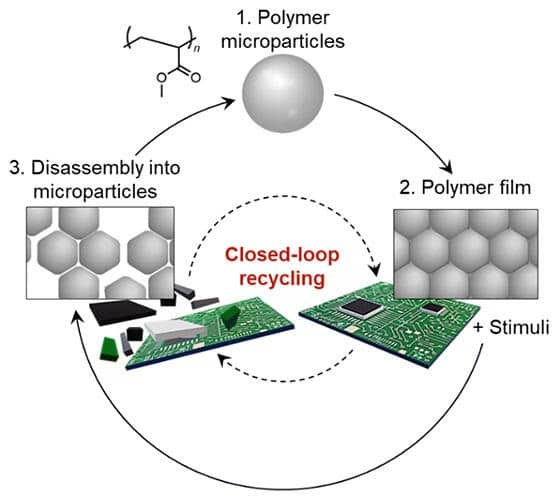
Credit : Shinshu University
-Turkiye’s growth forecast for 2023 has been downgraded by the European Bank for Reconstruction and Development (EBRD) from 3 percent to 2.5 percent
This revision comes as a result of several factors, including the effects of the earthquakes that occurred in February and the anticipated credit tightening due to the country’s external imbalances later in the year. The EBRD’s Regional Economic Prospects report, which also slightly lowered the overall 2023 output for the EBRD regions by 0.1 percent, provides detailed information about this adjustment. Chemical recycling platic waste
According to the EBRD, the impact of the earthquakes on Turkiye’s economic outlook is expected to be relatively limited, with a negative output shock of less than 1 percent for the year. However, the total cost of the natural disasters is estimated to exceed $100 billion, imposing a significant burden on the country’s reconstruction efforts.
In addition to the earthquake-related challenges, Turkiye faces ongoing economic vulnerabilities. Sustainable Packaging – automotive
The current account deficit continues to grow, and there is increasing short-term external debt, low foreign-exchange reserves, and pressure on the Turkish lira. These factors contribute to the overall weaknesses in the economy.
Although Turkiye experienced a strong start to 2023, driven by robust household and government spending, uncertainties surrounding the post-election economic policies could have a substantial impact on the country’s growth trajectory. The EBRD highlights the importance of addressing these uncertainties to ensure a more stable economic environment.
Looking ahead, the EBRD predicts that the reconstruction efforts following the earthquakes will contribute to economic growth in 2024, with a projected expansion of 3 percent. The bank acknowledges the potential positive impact of these efforts on Turkiye’s economy in the coming year. Chemical recycling platic waste
It is worth noting that the EBRD has been a significant investor in the Turkish economy, particularly in the private sector, with total investments exceeding €17.3 billion. These investments reflect the bank’s commitment to supporting economic development and stability in Turkiye. Sustainable Packaging – automotive

